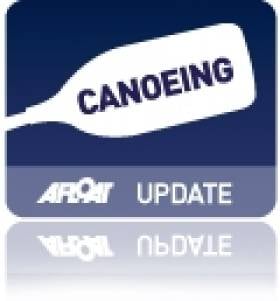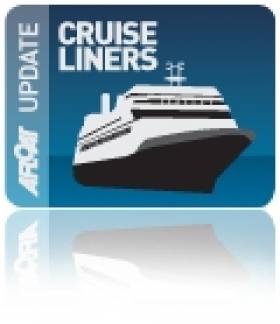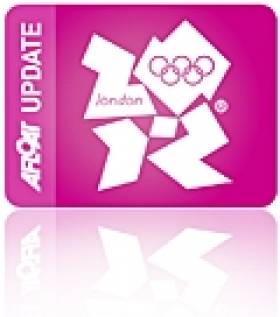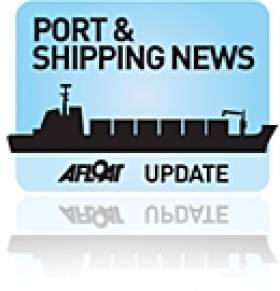About the Irish Navy
The Navy maintains a constant presence 24 hours a day, 365 days a year throughout Ireland’s enormous and rich maritime jurisdiction, upholding Ireland’s sovereign rights. The Naval Service is tasked with a variety of roles including defending territorial seas, deterring intrusive or aggressive acts, conducting maritime surveillance, maintaining an armed naval presence, ensuring right of passage, protecting marine assets, countering port blockades; people or arms smuggling, illegal drugs interdiction, and providing the primary diving team in the State.
The Service supports Army operations in the littoral and by sealift, has undertaken supply and reconnaissance missions to overseas peace support operations and participates in foreign visits all over the world in support of Irish Trade and Diplomacy. The eight ships of the Naval Service are flexible and adaptable State assets. Although relatively small when compared to their international counterparts and the environment within which they operate, their patrol outputs have outperformed international norms.
The Irish Naval Service Fleet
The Naval Service is the State's principal seagoing agency. The Naval Service operates jointly with the Army and Air Corps.
The fleet comprises one Helicopter Patrol Vessel (HPV), three Offshore Patrol Vessels (OPV), two Large Patrol Vessel (LPV) and two Coastal Patrol Vessels (CPV). Each vessel is equipped with state of the art machinery, weapons, communications and navigation systems.
LÉ EITHNE P31
LE Eithne was built in Verlome Dockyard in Cork and was commissioned into service in 1984. She patrols the Irish EEZ and over the years she has completed numerous foreign deployments.
Type Helicopter Patrol Vessel
Length 80.0m
Beam 12m
Draught 4.3m
Main Engines 2 X Ruston 12RKC Diesels6, 800 HP2 Shafts
Speed 18 knots
Range 7000 Nautical Miles @ 15 knots
Crew 55 (6 Officers)
Commissioned 7 December 1984
LÉ ORLA P41
L.É. Orla was formerly the HMS SWIFT a British Royal Navy patrol vessel stationed in the waters of Hong Kong. She was purchased by the Irish State in 1988. She scored a notable operational success in 1993 when she conducted the biggest drug seizure in the history of the state at the time, with her interception and boarding at sea of the 65ft ketch, Brime.
Type Coastal Patrol Vessel
Length 62.6m
Beam 10m
Draught 2.7m
Main Engines 2 X Crossley SEMT- Pielstick Diesels 14,400 HP 2 Shafts
Speed 25 + Knots
Range 2500 Nautical Miles @ 17 knots
Crew 39 (5 Officers)
LÉ CIARA P42
L.É. Ciara was formerly the HMS SWALLOW a British Royal Navy patrol vessel stationed in the waters of Hong Kong. She was purchased by the Irish State in 1988. She scored a notable operational success in Nov 1999 when she conducted the second biggest drug seizure in the history of the state at that time, with her interception and boarding at sea of MV POSIDONIA of the south-west coast of Ireland.
Type Coastal Patrol Vessel
Length 62.6m
Beam 10m
Draught 2.7m
Main Engines 2 X Crossley SEMT- Pielstick Diesels 14,400 HP 2 Shafts
Speed 25 + Knots
Range 2500 Nautical Miles @ 17 knots
Crew 39 (5 Officers)
LÉ ROISIN P51
L.É. Roisin (the first of the Roisín class of vessel) was built in Appledore Shipyards in the UK for the Naval Service in 2001. She was built to a design that optimises her patrol performance in Irish waters (which are some of the roughest in the world), all year round. For that reason a greater length overall (78.8m) was chosen, giving her a long sleek appearance and allowing the opportunity to improve the conditions on board for her crew.
Type Long Offshore Patrol Vessel
Length 78.84m
Beam 14m
Draught 3.8m
Main Engines 2 X Twin 16 cly V26 Wartsila 26 medium speed Diesels
5000 KW at 1,000 RPM 2 Shafts
Speed 23 knots
Range 6000 Nautical Miles @ 15 knots
Crew 44 (6 Officers)
Commissioned 18 September 2001
LÉ NIAMH P52
L.É. Niamh (the second of the Róisín class) was built in Appledore Shipyard in the UK for the Naval Service in 2001. She is an improved version of her sister ship, L.É.Roisin
Type Long Offshore Patrol Vessel
Length 78.84m
Beam 14m
Draught 3.8m
Main Engines 2 X Twin 16 cly V26 Wartsila 26 medium speed Diesels
5000 KW at 1,000 RPM 2 Shafts
Speed 23 knots
Range 6000 Nautical Miles @ 15 knots
Crew 44 (6 Officers)
Commissioned 18 September 2001
LÉ SAMUEL BECKETT P61
LÉ Samuel Beckett is an Offshore Patrol Vessel built and fitted out to the highest international standards in terms of safety, equipment fit, technological innovation and crew comfort. She is also designed to cope with the rigours of the North-East Atlantic.
Type Offshore Patrol Vessel
Length 90.0m
Beam 14m
Draught 3.8m
Main Engines 2 x Wärtsilä diesel engines and Power Take In, 2 x shafts, 10000kw
Speed 23 knots
Range 6000 Nautical Miles @ 15 knots
Crew 44 (6 Officers)
LÉ JAMES JOYCE P62
LÉ James Joyce is an Offshore Patrol Vessel and represents an updated and lengthened version of the original RÓISÍN Class OPVs which were also designed and built to the Irish Navy specifications by Babcock Marine Appledore and she is truly a state of the art ship. She was commissioned into the naval fleet in September 2015. Since then she has been constantly engaged in Maritime Security and Defence patrolling of the Irish coast. She has also deployed to the Defence Forces mission in the Mediterranean from July to end of September 2016, rescuing 2491 persons and recovering the bodies of 21 deceased
Type Offshore Patrol Vessel
Length 90.0m
Beam 14m
Draught 3.8m
Main Engines 2 x Wärtsilä diesel engines and Power Take In, 2 x shafts, 10000kw
Speed 23 knots
Range 6000 Nautical Miles @ 15 knots
Crew 44 (6 Officers)
LÉ WILLIAM BUTLER YEATS P63
L.É. William Butler Yeats was commissioned into the naval fleet in October 2016. Since then she has been constantly engaged in Maritime Security and Defence patrolling of the Irish coast. She has also deployed to the Defence Forces mission in the Mediterranean from July to October 2017, rescuing 704 persons and recovering the bodies of three deceased.
Type Offshore Patrol Vessel
Length 90.0m
Beam 14m
Draught 3.8m
Main Engines 2 x Wärtsilä diesel engines and Power Take In, 2 x shafts, 10000kw
Speed 23 knots
Range 6000 Nautical Miles @ 15 knots
Crew 44 (6 Officers)
LÉ GEORGE BERNARD SHAW P64
LÉ George Bernard Shaw (pennant number P64) is the fourth and final ship of the P60 class vessels built for the Naval Service in Babcock Marine Appledore, Devon. The ship was accepted into State service in October 2018, and, following a military fit-out, commenced Maritime Defence and Security Operations at sea.
Type Offshore Patrol Vessel
Length 90.0m
Beam 14m
Draught 3.8m
Main Engines 2 x Wärtsilä diesel engines and Power Take In, 2 x shafts, 10000kw
Speed 23 knots
Range 6000 Nautical Miles @ 15 knots
Crew 44 (6 Officers)
Ship information courtesy of the Defence Forces
Irish Navy FAQs
The Naval Service is the Irish State's principal seagoing agency with "a general responsibility to meet contingent and actual maritime defence requirements". It is tasked with a variety of defence and other roles.
The Naval Service is based in Ringaskiddy, Cork harbour, with headquarters in the Defence Forces headquarters in Dublin.
The Naval Service provides the maritime component of the Irish State's defence capabilities and is the State's principal seagoing agency. It "protects Ireland's interests at and from the sea, including lines of communication, fisheries and offshore resources" within the Irish exclusive economic zone (EEZ). The Naval Service operates jointly with the Army and Air Corps as part of the Irish defence forces.
The Naval Service was established in 1946, replacing the Marine and Coastwatching Service set up in 1939. It had replaced the Coastal and Marine Service, the State's first marine service after independence, which was disbanded after a year. Its only ship was the Muirchú, formerly the British armed steam yacht Helga, which had been used by the Royal Navy to shell Dublin during the 1916 Rising. In 1938, Britain handed over the three "treaty" ports of Cork harbour, Bere haven and Lough Swilly.
The Naval Service has nine ships - one Helicopter Patrol Vessel (HPV), three Offshore Patrol Vessels (OPV), two Large Patrol Vessel (LPV) and two Coastal Patrol Vessels (CPV). Each vessel is equipped with State of the art machinery, weapons, communications and navigation systems.
The ships' names are prefaced with the title of Irish ship or "long Éireannach" (LE). The older ships bear Irish female names - LÉ Eithne, LÉ Orla, LÉ Ciara, LÉ Roisín, and LÉ Niamh. The newer ships, named after male Irish literary figures, are LÉ Samuel Beckett, LÉ James Joyce, LÉ William Butler Yeats and LÉ George Bernard Shaw.
Yes. The 76mm Oto Melara medium calibre naval armament is the most powerful weapon in the Naval Services arsenal. The 76mm is "capable of engaging naval targets at a range of up to 17km with a high level of precision, ensuring that the Naval Service can maintain a range advantage over all close-range naval armaments and man-portable weapon systems", according to the Defence Forces.
The Fleet Operational Readiness Standards and Training (FORST) unit is responsible for the coordination of the fleet needs. Ships are maintained at the Mechanical Engineering and Naval Dockyard Unit at Ringaskiddy, Cork harbour.
The helicopters are designated as airborne from initial notification in 15 minutes during daylight hours, and 45 minutes at night. The aircraft respond to emergencies at sea, on inland waterways, offshore islands and mountains and cover the 32 counties. They can also assist in flooding, major inland emergencies, intra-hospital transfers, pollution, and can transport offshore firefighters and ambulance teams. The Irish Coast Guard volunteers units are expected to achieve a 90 per cent response time of departing from the station house in ten minutes from notification during daylight and 20 minutes at night. They are also expected to achieve a 90 per cent response time to the scene of the incident in less than 60 minutes from notification by day and 75 minutes at night, subject to geographical limitations.
The Flag Officer Commanding Naval Service (FOCNS) is Commodore Michael Malone. The head of the Defence Forces is a former Naval Service flag officer, now Vice-Admiral Mark Mellett – appointed in 2015 and the first Naval Service flag officer to hold this senior position. The Flag Officer oversees Naval Operations Command, which is tasked with the conduct of all operations afloat and ashore by the Naval Service including the operations of Naval Service ships. The Naval Operations Command is split into different sections, including Operations HQ and Intelligence and Fishery Section.
The Intelligence and Fishery Section is responsible for Naval Intelligence, the Specialist Navigation centre, the Fishery Protection supervisory and information centre, and the Naval Computer Centre. The Naval Intelligence Cell is responsible for the collection, collation and dissemination of naval intelligence. The Navigation Cell is the naval centre for navigational expertise.
The Fishery Monitoring Centre provides for fishery data collection, collation, analysis and dissemination to the Naval Service and client agencies, including the State's Sea Fisheries Protection Agency. The centre also supervises fishery efforts in the Irish EEZ and provides data for the enhanced effectiveness of fishery protection operations, as part of the EU Common Fisheries Policy. The Naval Computer Centre provides information technology (IT) support service to the Naval Service ashore and afloat.
This headquarters includes specific responsibility for the Executive/Operations Branch duties. The Naval Service Operations Room is a coordination centre for all NS current Operations. The Naval Service Reserve Staff Officer is responsible for the supervision, regulation and training of the reserve. The Diving section is responsible for all aspects of Naval diving and the provision of a diving service to the Naval Service and client agencies. The Ops Security Section is responsible for the coordination of base security and the coordination of all shore-based security parties operating away from the Naval base. The Naval Base Comcen is responsible for the running of a communications service. Boat transport is under the control of Harbour Master Naval Base, who is responsible for the supervision of berthage at the Naval Base and the provision of a boat service, including the civilian manned ferry service from Haulbowline.
Naval Service ships have undertaken trade and supply missions abroad, and personnel have served as peacekeepers with the United Nations. In 2015, Naval Service ships were sent on rotation to rescue migrants in the Mediterranean as part of a bi-lateral arrangement with Italy, known as Operation Pontus. Naval Service and Army medical staff rescued some 18,000 migrants, either pulling people from the sea or taking them off small boats, which were often close to capsizing having been towed into open water and abandoned by smugglers. Irish ships then became deployed as part of EU operations in the Mediterranean, but this ended in March 2019 amid rising anti-immigrant sentiment in the EU.
Essentially, you have to be Irish, young (less than 32), in good physical and mental health and with normal vision. You must be above 5'2″, and your weight should be in keeping with your age.
Yes, women have been recruited since 1995. One of the first two female cadets, Roberta O'Brien from the Glen of Aherlow in Co Tipperary, became its first female commander in September 2020. Sub Lieutenant Tahlia Britton from Donegal also became the first female diver in the navy's history in the summer of 2020.
A naval cadet enlists for a cadetship to become an officer in the Defence Forces. After successfully completing training at the Naval Service College, a cadet is commissioned into the officer ranks of the Naval Service as a Ensign or Sub Lieutenant.
A cadet trains for approximately two years duration divided into different stages. The first year is spent in military training at the Naval Base in Haulbowline, Cork. The second-year follows a course set by the National Maritime College of Ireland course. At the end of the second year and on completion of exams, and a sea term, the cadets will be qualified for the award of a commission in the Permanent Defence Force as Ensign.
The Defence Forces say it is looking for people who have "the ability to plan, prioritise and organise", to "carefully analyse problems, in order to generate appropriate solutions, who have "clear, concise and effective communication skills", and the ability to "motivate others and work with a team". More information is on the 2020 Qualifications Information Leaflet.
When you are 18 years of age or over and under 26 years of age on the date mentioned in the notice for the current competition, the officer cadet competition is held annually and is the only way for potential candidates to join the Defence Forces to become a Naval Service officer. Candidates undergo psychometric and fitness testing, an interview and a medical exam.
The NMCI was built beside the Naval Service base at Ringaskiddy, Co Cork, and was the first third-level college in Ireland to be built under the Government's Public-Private Partnership scheme. The public partners are the Naval Service and Cork Institute of Technology (CIT) and the private partner is Focus Education.
A Naval Service recruit enlists for general service in the "Other Ranks" of the Defence Forces. After successfully completing the initial recruit training course, a recruit passes out as an Ordinary Seaman and will then go onto their branch training course before becoming qualified as an Able Body sailor in the Naval Service.
No formal education qualifications are required to join the Defence Forces as a recruit. You need to satisfy the interview board and the recruiting officer that you possess a sufficient standard of education for service in the Defence Forces.
Recruit training is 18 weeks in duration and is designed to "develop a physically fit, disciplined and motivated person using basic military and naval skills" to "prepare them for further training in the service. Recruits are instilled with the Naval Service ethos and the values of "courage, respect, integrity and loyalty".
On the progression up through the various ranks, an Able Rate will have to complete a number of career courses to provide them with training to develop their skills in a number of areas, such as leadership and management, administration and naval/military skills. The first of these courses is the Naval Service Potential NCO course, followed by the Naval Service Standard NCO course and the Naval Service senior NCO course. This course qualifies successful candidates of Petty officer (or Senior Petty Officer) rank to fill the rank of Chief Petty Officer upwards. The successful candidate may also complete and graduate with a Bachelor of Arts in Leadership, Management and Naval Studies in partnership with Cork Institute of Technology.
Pay has long been an issue for just the Naval Service, at just over 1,000 personnel. Cadets and recruits are required to join the single public service pension scheme, which is a defined benefit scheme, based on career-average earnings. For current rates of pay, see the Department of Defence website.
































































